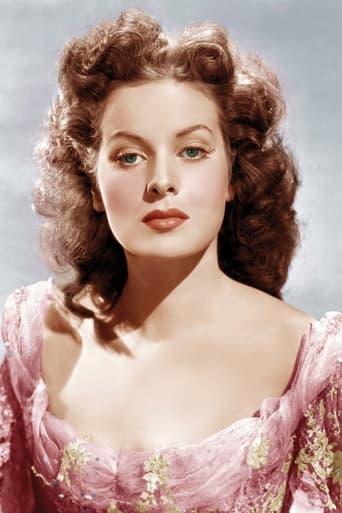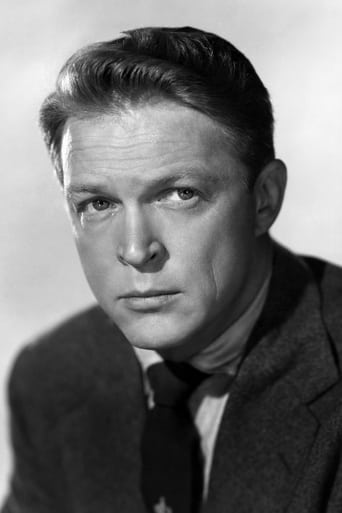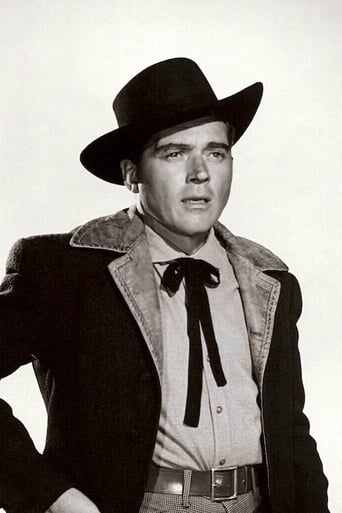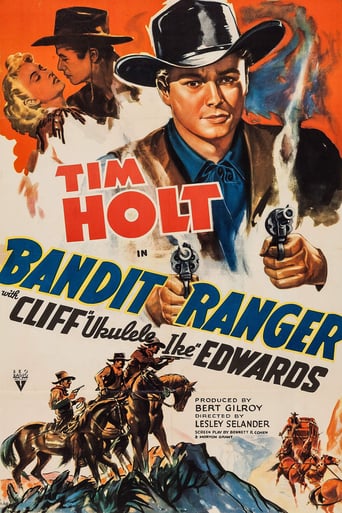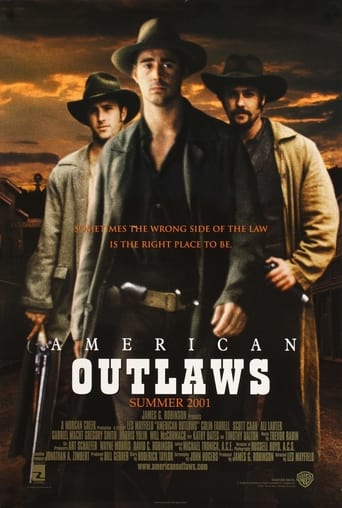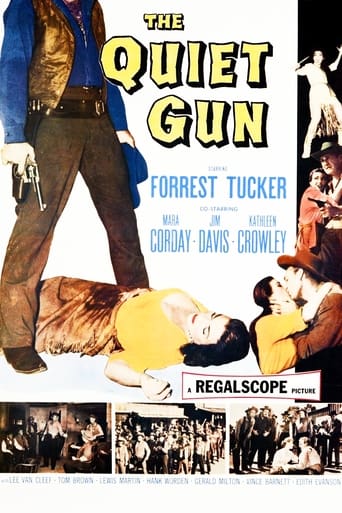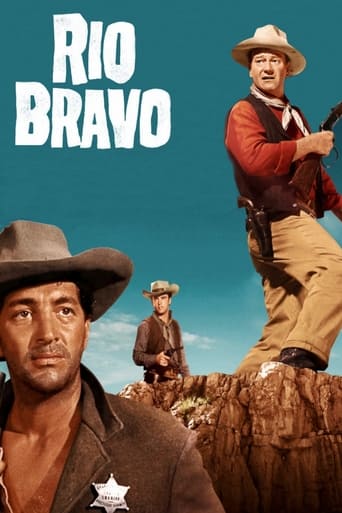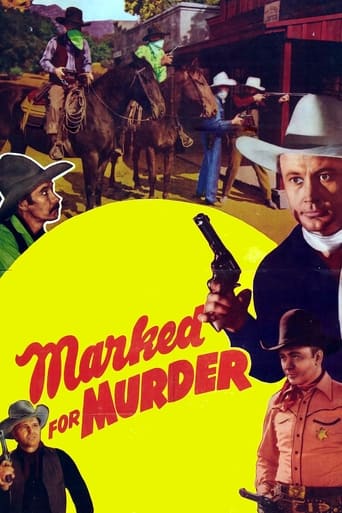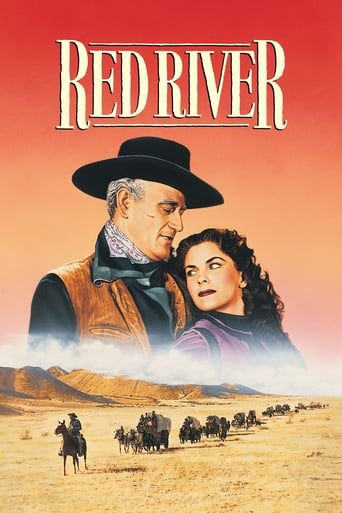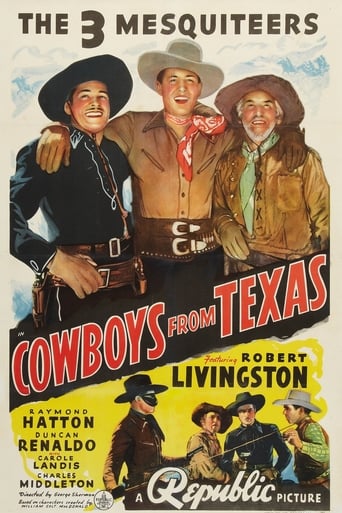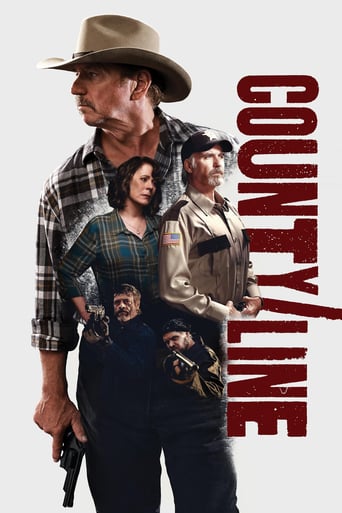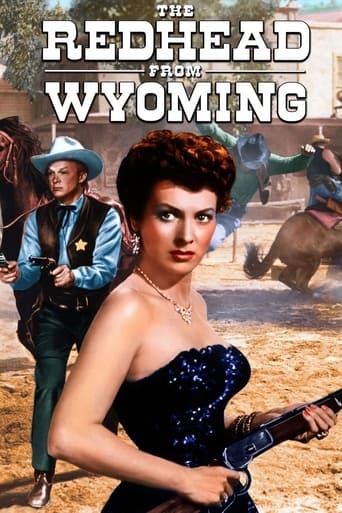

The Redhead from Wyoming (1953)
A saloonkeeper sides with the sheriff for justice after she's framed for rustling.
Watch Trailer
Cast


Similar titles
Reviews
That redhead is no deadhead, as Maureen O'Hara proves, in this entertaining range war drama. The screenplay is brilliant, providing a variety of shifting alliances to keep us guessing. Maureen's character, Cattle Kate(so nicknamed) is actually from Texas, not Wyoming, to which she has recently migrated, at the beckoning of the second most visible character: Jim Averell(William Bishop), whose historical namesake was married to Cattle Kate for a few years. He is a mysterious complex man with a Stalin complex. Stalin's game plan was to be a benchwarmer while the Fascist and non-fascist governments of Europe destroyed each other in warfare. Then, the USSR would roll over all of Europe with little effective opposition, with the arsenal they would build up in the meanwhile. Of course, the Germans upset his plan by overrunning most of Europe in record time and with minimal destruction. Well, Averell tells Kate that his ambition is to become governor, and buy up most of Wyoming. Toward this goal, he sought to ally himself with the small ranchers against the big bully ranchers, who had seen to it that legislation was passed that favored them. Another part of his scheme is to incite a range war between The large and small ranchers, who would mutually destroy each other, and leave their ranches for him to pick over. Reece Duncan(Alexander Scourby)would represent the local big owners.Clearly, Averell is a wealthy man, but the source of his wealth is not apparent. He seems to have lots of time to meddle in the affairs of the ranchers, without actually owning any cattle himself. He sets up Kate with a cattle buying business, as well as a saloon business to cater to her traditional employment, with the rational that they will probably marry eventually. But, actually he plans to use her toward his agenda. Yes, he's a snake! She, not he, takes the risk of being accused a cattle rustler, if her hands brand some mavericks that Duncan considers are his, or rustle somebody's branded cattle. He arranges for her branding logo to closely resemble that of Duncan's, so that it can be applied over Duncan's brands which are then hidden. Kate herself wouldn't approve of that, but her hands might be tempted. An incident happens where Duncan's foreman is murdered on the range at night when some cattle go missing, and one of Kate's branding irons is found near his body. The cattlemen are of a mind to string her up, so she is put in jail, with several deputies as guards, partly for her safety. It seems awfully careless for one of Kate's hands to leave that branding iron as incriminating evidence. This mystery is resolved partly by facts and partly by logic.I haven't yet mentioned Sheriff Blaine: recently appointed essentially by Averell, as meeting his specification of someone he thought would be malleable to his interests. Blaine's Texas family was wiped out in a range war, and he doesn't want to get involved in another, so he's thinking of resigning soon. Yet, he doesn't easily back down when confronted with a difficult problem. He hires a bunch of deputies when he thinks it's necessary.Averell, Duncan, and Blain are all single, so which, if any, is Kate going to marry? Why do you think she made this choice? I'll let you view the film to find out(Film currently available cheaply as part of an 8 pack of westerns.) The real Averell apparently had no ambition to be governor nor own the whole of Wyoming. He and Kate were lynched together for supposedly rustling some cows. Probably, it depended on what all was included in the concept of rustling, as pointed out in this film.Included is an obligatory cattle stampede, consisting of mavericks. Also, a huge, complicated, street brawl as the climax.Of the main characters, Maureen and Bishop(as Averell) have plenty of charisma, which is lacking for Scourby(Duncan) and Nicol(Sheriff). That's not to say that these others weren't adequate in their roles. I think the picture would be much more popular if "name" actors had taken the place of the latter two. Also, a humorous sidekick, such as Andy Devine or Gabby Hays would have been nice.Thank goodness it was shot in color, or we would have missed Maureen's flaming hair to match her tongue and action! For other good, but little known, color films that feature Maureen as a domineering wildcat, I recommend "Comanche Territory" and "Against All Flags", she being a pirate captain in the latter.
During the 1930s, 40s and 50s (especially the 50s), Hollywood made a bazillion western films. Because they made so many, it's not surprising that there are several basic plots you'll find in about 95% of these movies. This one features two of these plots...plots that are really clichés because they occur so often. First, there is Jim Averell...a guy who wants to be more and more powerful. He's running for governor and has his eyes set on controlling the west. Second, he's making himself richer and richer by bringing in a gang of cutthroats and they spend their time rustling other folks' cattle. There is so much familiarity about these story elements...too much. Sure, Maureeen O'Hara is there and she looks nice in color but the film never seems more than just another mediocre western with little to distinguish it aside from having O'Hara involved in the big gunfight at the end. Ordinary...
Ah, the glamour and pure entertainment of Golden age Hollywood! Shapely saloon queen is caught in the middle of the Wyoming cattle war and between two men: suavely villainous gambler and distrusting sheriff hero. Red-haired Maureen O'Hara, the star of the picture among unknowns, and her dresses blaze in gorgeous 1950's Technicolor, and routine western shenanigans between cattle kings and new settlers are enjoyably went through. Script by Polly James and Herb Meadow is just an excuse to show beauty of O'Hara's heroine and her rosy cheeks, the scenery and glorious colours. Bad thing? No, not at all, on the contrary. Dennis Weaver, Sheriff McCloud from my childhood, has a minor role.
A voice-over opening, with Winston Hoch's outstanding camera-work of calf roping and branding on screen, is a promising beginning and describes the setting for this film in 1870s Wyoming Territory, aboil with open range cattle raising and rustling, stimulated by the Territory's Maverick Law which permitted settlers to brand calves as their own if they were not within the confines of deeded property. When the voice-over ends the scenario begins, and that is a pity as it is woeful, approaching unintentional pastiche of the genre, with a fast-moving series of scenes lacking development, motivation and narrative continuity helpful to a viewer. An obvious vehicle for the beautiful Maureen O'Hara, splendid in Technicolor with her flaming red hair and green eyes, the piece unfortunately places her acting shortcomings to the fore, although she does her own stunt work, as is her wont. Alex Nicol is miscast as a laconic sheriff and Alexander Scourby is a bit too elegant for his role as a principal landowner, but William Bishop makes something interesting of his part as the film's primary villain, although his dialogue is no more penetrating than that of any other cast member. The plot deploys O'Hara as Kate Maxwell, a dance hall diva who is set up as proprietress of a saloon by her former lover, Jim Averill (Bishop) so that he may utilize her place of business as a front for rustling cattle, whereupon Kate is rent by her dual attraction to Averill and to the sheriff, who is taking steps to oppose this criminal enterprise. Director Lee Sholem, a straight ahead sort, is not given to varying of moods within his pictures, and that is the case here, resulting in a cursory and literal reading of the puerile script. Edward Stevenson's costumes for O'Hara are striking and appropriate and master make-up artist Bud Westmore does not have his craftsmanship disturbed by her riding and shooting activity, which is of a piece with the others in the colorfully garbed cast, whose raiment is barely disturbed by violent goings-on; indeed, the players often appear to be about to launch into song and dance, turning this affair into a musical of sorts, which might have been an improvement. The film includes the debut of Jeanne Cooper and an early effort of Dennis Weaver, atypically portraying a hard case, and somehow Robert Strauss is included in this one, completely out of place. Despite crisp editing, REDHEAD seems to take a long while arriving at its predictable ending, and although the cast never seems the worse for wear from its exertions, the viewer certainly will be, during this motivationless attempt to cast light upon a significant segment of Western American history.


